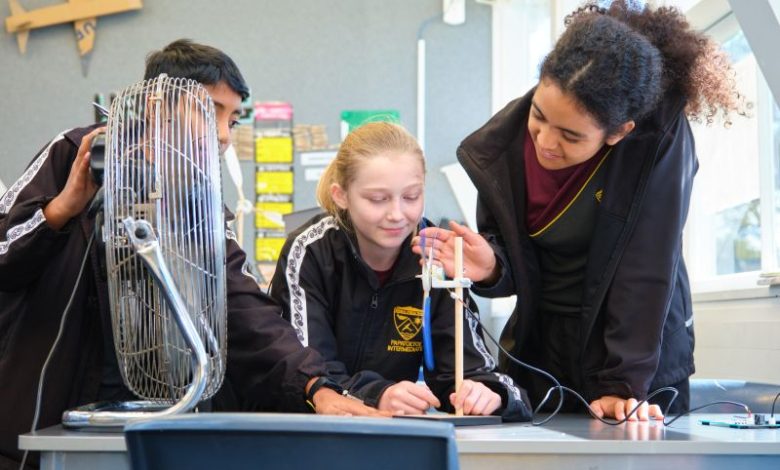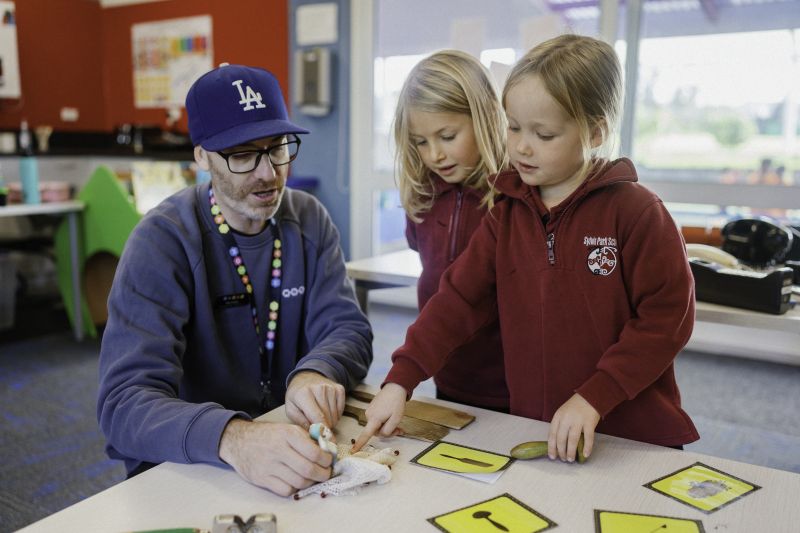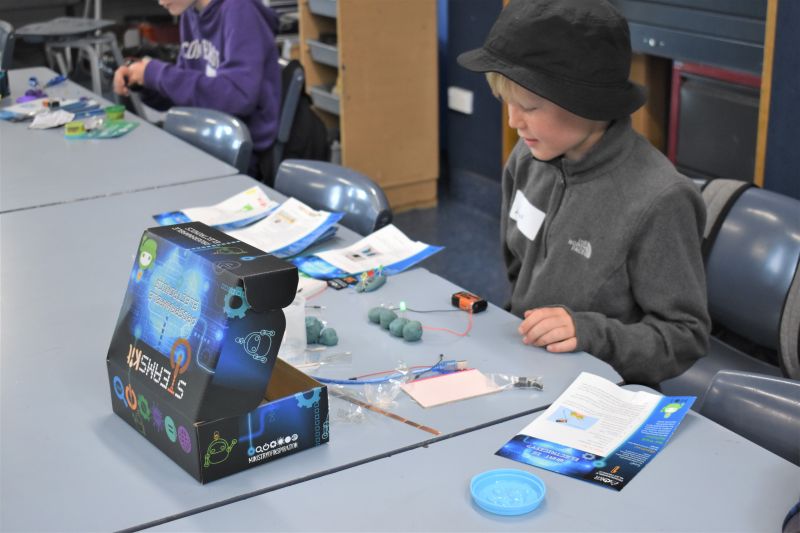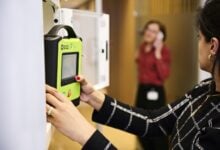A STEAM powered future
We discuss the benefits of STEAM learning, and explore some STEAM opportunities on offer for New Zealand students.

In today’s changing world, STEAM and the interdisciplinary, collaborative approach it promotes is crucial.
Read the latest print edition of School News HERE
STEAM approaches Science, Technology, Engineering, Arts and Math in an interconnected way that helps students make links between learning areas. The approach develops students’ problem-solving skills, critical thinking and analytical abilities, enabling them to connect their learning and theories to real-world issues.
The benefits of STEAM learning
In an increasingly global world, with technology and innovation at the forefront, 21st century skills are highly valued by employers. As well as a grasp of literacy, maths and science, school leavers need the critical thinking skills to approach tasks differently, across all areas of the workplace. Social, economic and technological change is reshaping the kind of jobs available in the future; this in turn is impacting the skills required by business and industry.
Building on the early 2000s concept of STEM, STEAM includes arts education, encompassing visual and performing arts, manual arts, music, dance and more. The inclusion of arts recognises that technology alone is not enough. STEAM aims to spark students’ imagination and creativity through the arts in ways that naturally align with STEM learning. Through engagement with the arts, students can develop creativity, communication and performance skills which will benefit their education as well as future employment opportunities.
One study, conducted in elementary schools in New York City, found that “rigorous interdisciplinary instruction that links visual arts, literacy and math skills, and supports cognitive skill development, can increase students’ literacy and math learning while nurturing their art making skills and enhancing their ability to meaningfully reflect on their own work and that of their peers.”1
In other words, an interdisciplinary approach benefits many learning areas for all ākonga, lifting overall achievement both individually, and for the cohort.

At the higher levels, Science, Technology, Engineering, Arts and Maths themselves are becoming increasingly interdisciplinary, and the big challenges of today’s world – climate change, food insecurity, widespread changes to natural habitats – all require innovative, big-picture approaches and solutions. In the primary and secondary levels, a STEAM education more closely mimics real-world applications of learning, improving students’ future employability and setting them up with the skills needed to be successful later in life.
STEAM isn’t only the foundation for our future engineers, computer information technicians and scientists, it can also inspire our future creative and visual artists and designers. In the real-world, technology and arts have been integrated for some time as people utilise technology to make art and as a creative outlet. An art-centred approach to STEAM may benefit educators looking to engage ākonga who may be disengaged with maths or science. STEAM is a way to equip children and students with flexible skill sets that will serve them well in a variety of contexts.
STEAM in the classroom
For educators looking to implement STEAM education, there are many ways to do so: project-based learning is a popular, accessible and relatively simple way to incorporate STEAM into a classroom.
Due to its interdisciplinary nature, educators looking to implement STEAM into their classroom must undertake careful project design. Connections and learning outcomes must be intentional and carefully thought through and should incorporate at least two subjects from each field. Assessment should also be based on more than one field. Placing students into groups can develop their team-building skills.
Whatever topic is at hand – whether that’s exploring our rich ecosystem; designing and implementing a webpage or other technology; making and marketing a product – educators can refer to the following six steps for creating lesson plans.
Question: what is the problem you’d like your students to investigate? Background information should make it clear for students what they’re investigating and why, and how it relates to certain subjects and fields of learning.
Context: what factors represent barriers to a solution? Seeking contextual knowledge is key and gives students a chance to use skills learned from other areas of the curriculum. Can students use appropriate research resources, perhaps learned from social studies subjects? What about technology skills to sift through information?
Identifying: educators may wish to work with their students on understanding what solutions are already available and identifying gaps and potential new solutions. Educators can monitor students to understand their strengths and what they require extra support with.
Application: Students can try their own hands-on solutions and analyse what works and doesn’t.
Presentation: Students take charge of learning by presenting findings and evaluating outcomes. It’s an opportunity for feedback.
Reflection: After the project is completed, a period of reflection encourages deeper learning.
Educators looking for resources to plan their own STEAM lessons can access a variety of free, online resources to help create lesson plans, and even fully formed lessons for educators to use in classrooms on the Ministry of Education’s Te Kete Ipurangi website under the Future-focused learning, STEM/STEAM tab.

Educators of all levels may also wish to consider how existing school resources could promote hands-on engagement for ākonga. Using the latest educational tools available across technology, art and computer rooms as part of student project design can bring lessons alive for students. The possibilities are endless, whether that’s utilising robotics equipment, laser-cutting, 3D printing, coding and other computer programmes, students can try their hand at the many disciplines that STEM encompasses.
Engaging the experts
For specialist STEAM education opportunities, schools can engage experts in the field. Incursions, excursions, and learning resources can all be provided by external suppliers, helping to reinforce and enrich your classroom teaching. School News spoke to some of these STEAM education experts to find out how they can enhance student learning.
The Ministry of Inspiration (MOI) actively engages students in Science, Technology, Engineering, Arts, and Mathematics (STEAM) through three main opportunities, with a particular focus on fostering innovation and hands-on learning experiences.
At the forefront is the flagship initiative, Aquabots, an underwater robotics program designed to engage students’ interest in science and engineering. Through a complimentary build day, students have the opportunity to construct a fully operational underwater robot. Teams are then supported to prepare for their annual regional competition.
Additionally, MOI collaborates with schools through the STEAMS kit, specifically tailored for students in Year 5 to Year 13. This kit, intended for both individual and pair work, serves as a catalyst for electronic learning. The kit takes them from novice to expert via easy-to-follow lessons based on empowering students to explore the realms of coding and electronics.
Complementing these initiatives is the Professional Learning and Development (PLD) program, focusing on enhancing digital fluency and literacy. Developed in collaboration with schools, the PLD is uniquely structured to address each school’s specific gaps and needs. By co-designing with educational institutions, Ministry of Inspiration ensures that their PLD offerings align with the evolving landscape of digital education, providing valuable insights and skills to both educators and students alike.
Making STEM learning inspiring, impactful and accessible is what the Wonder Project does best. Its hands-on, curriculum-aligned, free STEM programmes have reached more than 100,000 young Kiwis since 2018, engaging typically disengaged ākonga and empowering kaiako to teach STEM with confidence.
Programmes are carefully curated to deliver sustained engagement with STEM across the most impressionable years of Kiwi kids’ school experience, reinventing their perceptions when it matters most. Across a school term, rangatahi take on awe-inspiring challenges like building and launching rockets, effortlessly linking their mahi back to STEM concepts along the way.
Alongside teaching guides and scaffolded ākonga learning material, the Wonder Project supplies kaiako with free STEM teaching equipment. Where possible, each class is also paired with an industry professional who provides a source of meaningful representation and builds confidence along the learning journey, so ākonga can achieve remarkable things at school, in their hapori, and in their future careers.
Discover a world of STEM learning at MOTAT. Book a visit for your class or let MOTAT bring hands-on fun and educational experiences to you via school visits, online workshops and learning kits. From Design Thinking to Science and Engineering, MOTAT’s programmes challenge students with problem solving and collaborative activities. With a range of programmes to choose from, MOTAT can tailor an experience specific to your class based on your learning goals.
MOTAT’s mobile STEAM Cells visit thousands of students in schools across Auckland every year. Experienced educators will encourage your students to think strategically and inspire them to become the young innovators of tomorrow.
Delivered direct to your door, Learnable kits offer affordable access to STEM resources, designed to develop critical soft skills such as student agency, collaboration, communication and resilience. These kits enable teachers to use learning resources at a fraction of the cost of buying the materials and are perfect for classroom-sized groups.
References:
1Cunnington, M., A. Kantrowitz, S. Harnett & A. Hill-Ries. 2014. Cultivating Common Ground: Integrating Standards-Based Visual Arts, Math and Literacy in High-Poverty Urban Classrooms. Journal for Learning through the Arts: A Research Journal on Arts Integration in Schools and Communities 10(1).









